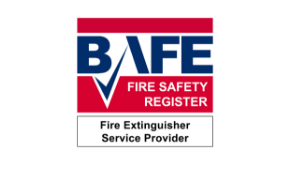The season to be jolly can also be a time for fire hazards – and while not wanting to pour cold water on anyone’s Christmas, CDS is playing the part of a wise Santa and offering a few seasonal safety tips in the run up to the big day.
Its technical team has been talking to fire services across the country to find out what they identify as the biggest seasonal no-nos to ensure householders avoid the issues most likely to cause a domestic blaze.
Top of the list comes the traditional pine-scented real Christmas tree. A dry tree is a hazard and can fill a home with fire and toxic gases with alarming speed if not properly cared for.
When buying a tree, they recommend carrying out two important checks – on the needles and the trunk. On a freshly cut tree, the needles should be hard to pull back from the branches and shouldn’t break. If they do, it has probably been cut down too long ago and dried out – making it a fire hazard.
The trunk should be sticky to the touch. If it’s not, then it’s too old.
They advise not putting the tree up too early or leaving it up for longer than two weeks as it will become overly dry and could catch fire. And it’s absolutely vital to keep it watered at all times. A six-foot tree can devour as much as a gallon of water every other day – so check it frequently. The water isn’t just to keep the tree looking nice – it’s to stop it becoming a perfect combustible material.
Lighting is another potential fire hazard.
LED fairy lights are safer than the traditional alternative because they are cool to the touch and less likely to set fire to flammable Christmas tree decorations. But while the bulbs themselves are safer, the transformer element does get very hot and should never be covered, hidden behind curtains or come into contact with presents piled around the tree.
Missing bulbs on traditional strings of lights actually cause the remaining bulbs to burn hotter, increasing the risk of fire if they touch a nearby decoration or dried out branch – so they must be replaced. And old flickering lights should be disposed of, however much they remind you of your childhood Christmases.
Fairy lights should be switched off when no-one is around and when the household goes to bed as an unexpected power surge could see the tree catching fire.
Delicate paper, cardboard or fabric decorations hanging on the tree can also be a hazard if they come into contact with a hot bulb. The same goes for presents whose wrapping paper represents an easy source of fuel.
Non-tree decorations are another cause for concern. While draping garlands around the fireplace or near candles may look pretty, the risks are evident.
And all fire services offer their year-round reminder that sockets shouldn’t be overloaded and that cooking and drinking alcohol never mix – however much fun it may seem at the time.
Cheshire Fire and Rescue Service has even created its own ‘12 days of Christmas’ fire safety campaign. Daily activities include checking your Christmas lights conform to British Standard BS EN 60598, switching and unplugging your fairy lights off when going out or retiring for the night, and not attaching Christmas decorations to lights or heaters.
CDS managing director Simon Abley said: “We don’t want to say ‘bah humbug’ this Christmas, but these sensible precautions should help minimise the fire risk. Of course, it’s also important to check your smoke and fire alarms and fire extinguishers – so that if the worst should happen you and your family have time to escape.”


















